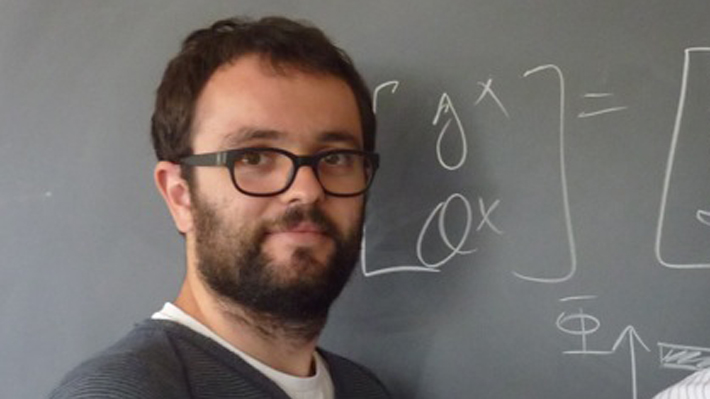New lecturer joins CTC
The CTC is very pleased to welcome Dr Jorge Santos as a new Lecturer in Theoretical Physics. Jorge obtained his PhD from Cambridge in 2010 and has been working as a postdoctoral fellow at the University of California Santa Barbara and Stanford University. Here he describes the focus of his research:
With the advent of gauge/gravity dualities, which relate the properties of a gravity theory in d dimensions with those of a d-1 dimensional strongly coupled quantum theory where gravity is absent, the understanding of novel gravitational phenomena in d > 4 and in asymptotically anti de-Sitter (AdS) spacetimes became particularly relevant. Within these dualities, gravity can be seen as an interdisciplinary tool to understand strongly coupled quantum theories, in addition to a fundamental theory of Nature. Moreover, due to our poor understanding of generic strongly coupled field theories, gravity is often the only tool available. This offers a real chance to make connections with experiments, so long as we can understand the Universal properties of their simplified gravitational duals.
However, little is known about gravity in AdS or in d > 4, except that it is markedly different from the d = 4 asymptotically flat case: d > 4 black holes can be unstable, are not uniquely determined by their asymptotic charges and have many topologies, cosmic censorship does not hold in d ≥ 5 and AdS space is itself nonlinearly unstable. Conversely, one can hope to unravel novel gravitational phenomena by probing strongly coupled field theories. Over the last few years I have been involved in a series of collaborations, across several oversea and UK universities including Stanford, UCSB, Southampton, Saclay and Barcelona, that helped uncovering some of these results.
My current research interests in this area are primarily related to how simple and universal phenomena in field theories can pose challenges to our current understanding of gravity. For instance, one of Hawking’s seminal results in the 70s (the so called rigidity theorems) states that black holes must have a constant horizon temperature. However, simple field theory arguments seem to suggest this cannot be the case. Let us imagine the following thought experiment: consider a field theory in contact with two heat sources, at different temperatures. What happens with this configuration at late times? According to the diffusion equation, we expect the system to reach equilibrium and develop a temperature gradient, thus reaching a steady state configuration with constant heat flux. How do we study this simple phenomenon in AdS/CFT?
In its most simple disguise, AdS/CFT establishes an equivalence between states of certain field theories (such as the one described in the paragraph above) and solutions of Einstein’s equations with a negative cosmological constant. The boundary of AdS, where gravity is non-dynamical, is the spacetime where the field theory lives. Since we want to study a field theory in contact with two heat sources at different temperatures, we are naturally led to study a configuration where at the boundary of AdS we put two black holes of different temperatures at opposite poles of a two sphere. What is then the bulk dual to this configuration? A natural guess would be to join both horizons through a common horizon that extends into the bulk - a black funnel. However, this horizon (by definition) would necessarily have a varying temperature! What then goes wrong with Hawking’s theorem? In a nutshell, nothing! The theorem only applies to black holes whose horizon has finite extension (such as the four-dimensional black holes in our Universe). The solutions we are considering, however, have horizons that are infinite in extent, thus evading Hawking’s assumptions to prove the theorem. Furthermore, these new type of horizons must allow for temperature gradients, which produce a constant heat flow: flowing horizons. We have recently constructed these flowing horizons and found beautiful agreement with the field theory expectations.
In this simple example, we have seen that universal properties of field theories can reveal much about gravity. However, we hope we can also do the converse! This is certainly an area where I have done some work in the past, and plan to continue doing so at DAMTP.
In my opinion, there has never been a more exciting time to do gravitational physics! We are at the dawn of a new era, where what we thought were the pillars for black hole physics, both at the quantum and classical level, are constantly being challenged.

